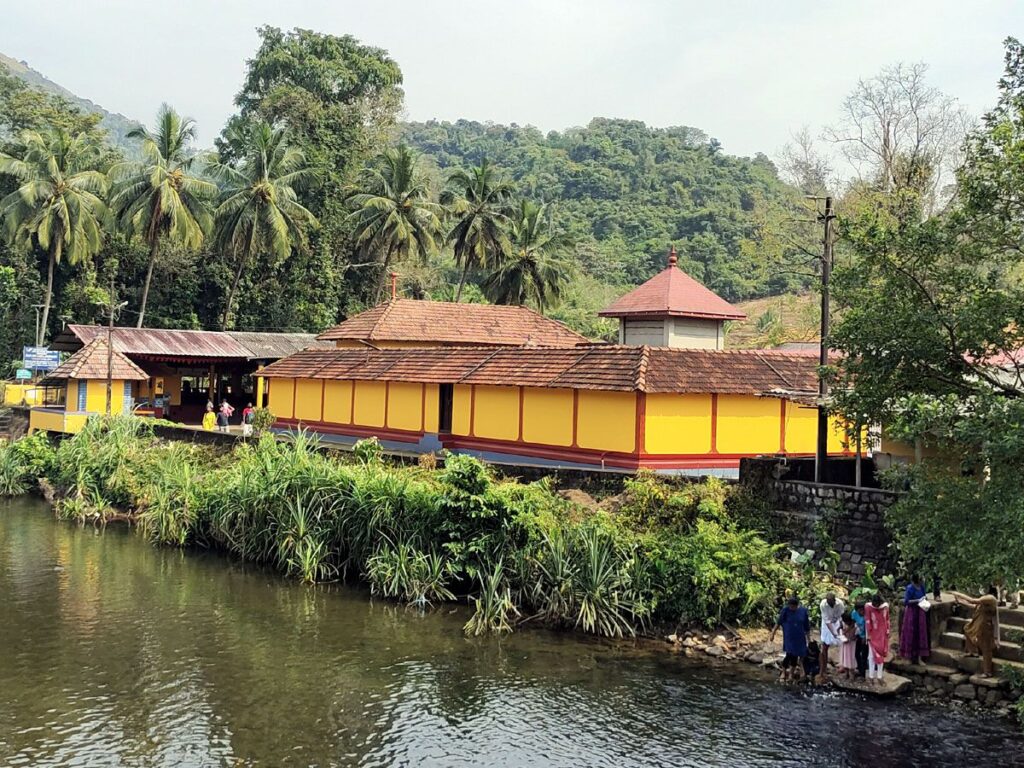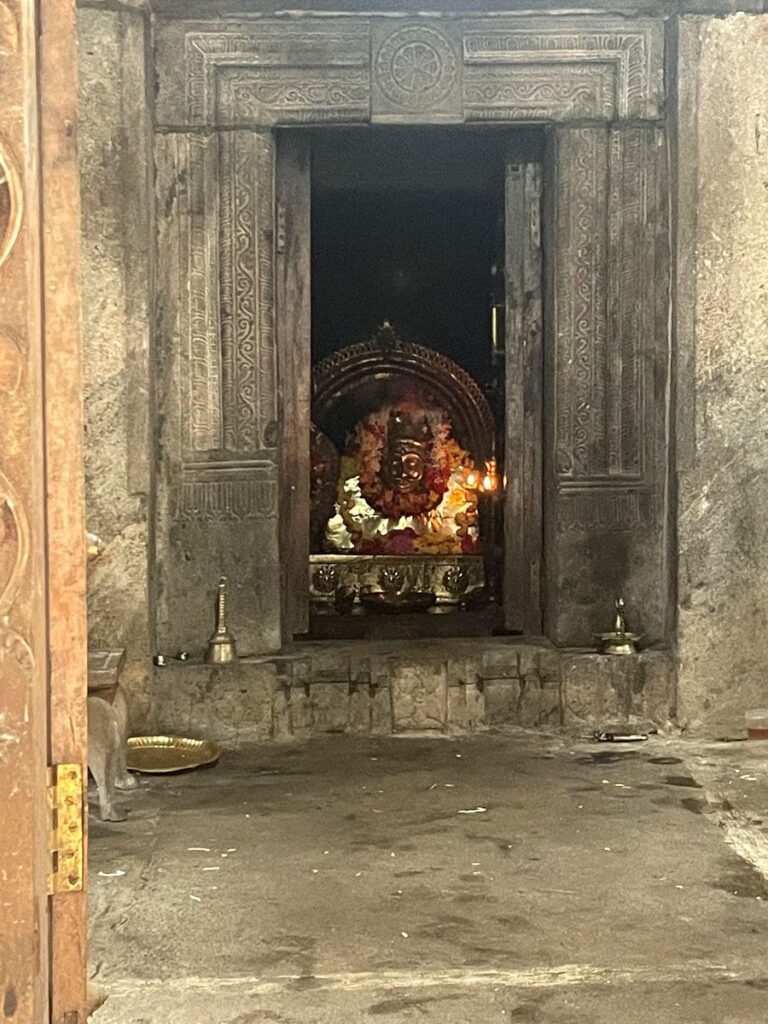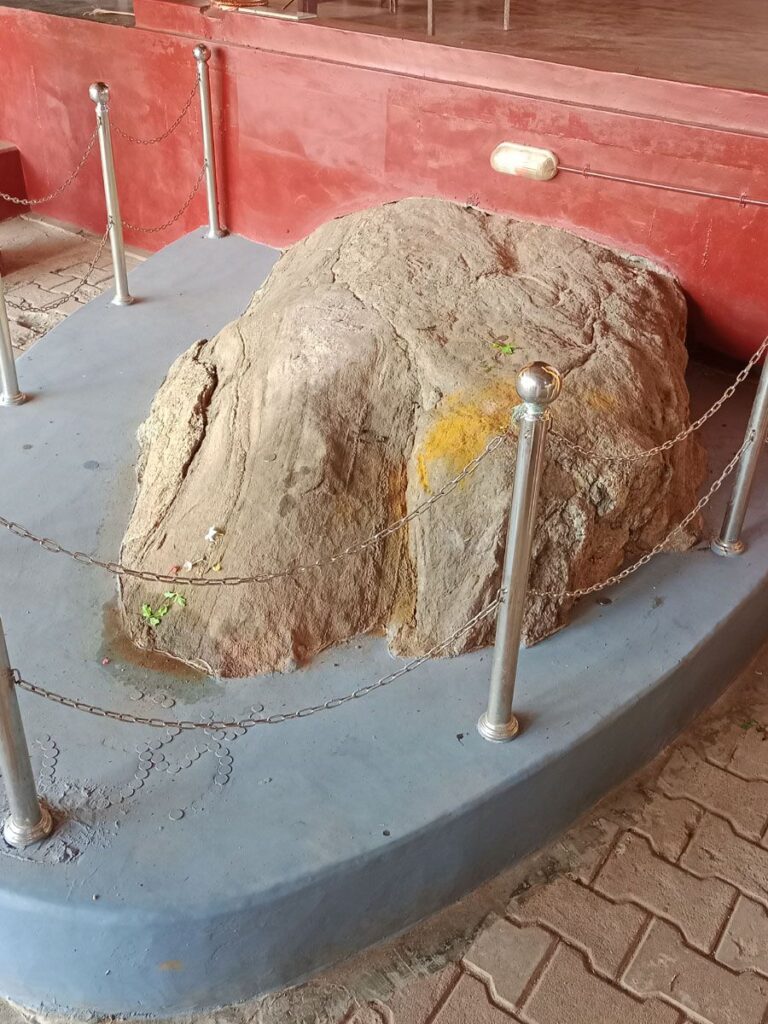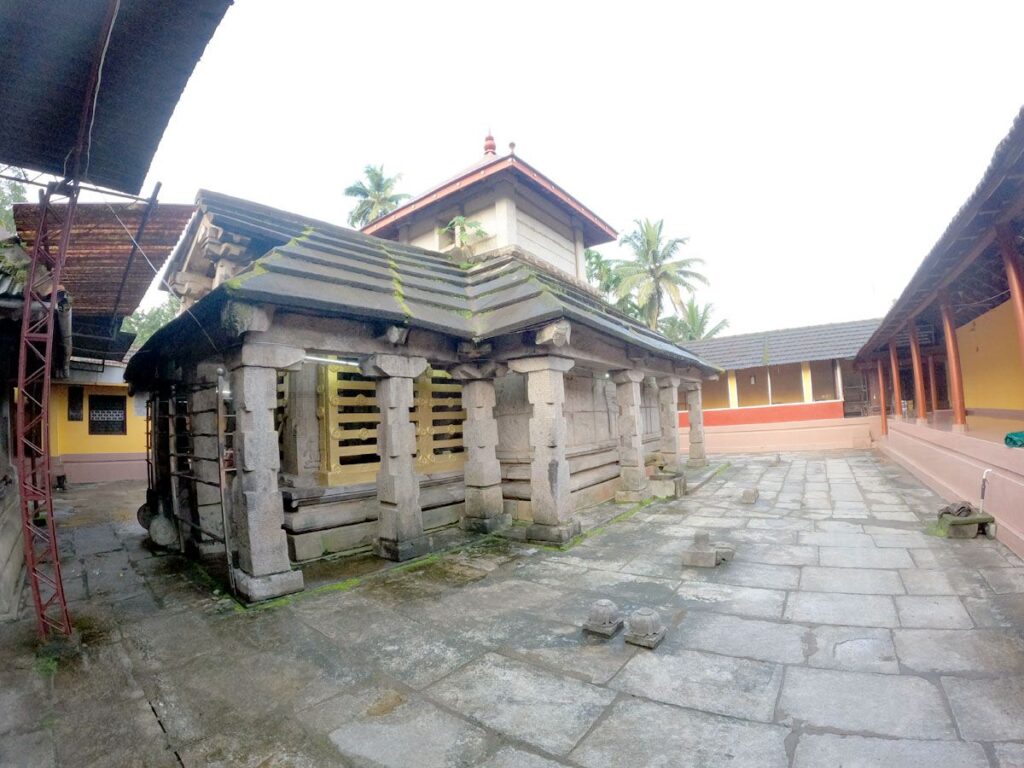Shishileshwara Temple: 700 yrs old Sacred Fishes
The Shishileshwara Temple is an ancient Shiva temple situated on the banks of the Kapila River in Shishila village, Belthangady Taluk, Dakshina Kannada district of Karnataka, India. It is estimated to be around 800 years old. The temple is dedicated to Lord Shiva, the Hindu god of destruction and regeneration.

Contents
Shishileshwara Temple History:
The Shishileshwara Temple, also known as Matsya Theertha, has a rich history that spans over 700 years. Let’s delve into the fascinating details:
- Origin and Location:
- The temple is situated in the village of Shishila, which lies at the base of the Western Ghats in the Belthangady taluk of Dakshina Kannada district, Karnataka, India.
- It stands on the banks of the Kapila River.
- Lord Shishileshwara:
- The temple is dedicated to Lord Shishileshwara.
- The river near the temple is home to sacred fishes.
- These fishes are regarded as sacred by the villagers and are fed with beaten rice and puffed rice as an offering.
- Locally, the place is also known as ‘Matsya Theertha’.
- Tragic Incident and Memorial:
- In 1996, miscreants poisoned the river, resulting in the death of thousands of fishes.
- A memorial carved in stone stands beside the temple, serving as a reminder of this tragic event.
- Fish Sanctuary:
- Shaken by the tragedy, the villagers established the Matsya Hitarkashana Vedike, a forum for the protection of the sacred fishes.
- Today, the Shishila temple fish sanctuary accommodates about 40 species of fishes.
- It is one of the few places in India where the huge Mahseer fishes enjoy significant protection.
- Demographics:
- The village of Shishila has a population of 2090.
- Inhabitants follow Hinduism, Islam, or Christianity.
- Languages spoken include Kannada, Tulu, Havyaka, Konkani, Marathi, and Beary.
Read More>> Karya Siddhi Anjaneya Temple Girinagar Bangalore

Legend of Shishileshwara Temple:
- Lord Shiva on Kumaragiri Hill: In the beginning, Lord Shiva resided on the nearby Kumaragiri Hill.
- Daily Abhisheka: Every day, priests would trek down to the Kapila River to collect water for performing ‘abhisheka’ (ritual bathing) for the Shiva Linga on the hill.
- The Pious Stumble: One day, a priest carrying water from the river tripped and fell. Devastated, he prayed to Lord Shiva, begging for him to manifest closer, by the river, so the priest wouldn’t have to make the difficult journey daily.
- Divine Appearance: Touched by the priest’s devotion, Lord Shiva decided to grant his wish. The Linga itself emerged near the spot where the priest fell, establishing his presence there. This self-manifested Linga is what’s worshipped in the Shishileshwara Temple today.
- The Stone of Witness: It’s said that a stone called “Sri Shila” near the Kapila River within the temple complex marks the exact spot where the priest fell and Lord Shiva manifested.
Read More>> Horanadu Annapoorneshwari Temple

Significance of Shishileshwara Temple:
- Dharmasthala Pilgrimage Circuit: Shishileshwara Temple is an integral part of the pilgrimage circuit in Dharmasthala, which is renowned for its religious and spiritual significance. Pilgrims often visit multiple temples in the area, including the Shishileshwara Temple, as part of their religious journey.
- Historical Importance: The temple is believed to have a long history, dating back several centuries. Its architecture and sculptures reflect the rich cultural heritage of the region and provide insights into the artistic and architectural styles prevalent during its construction.
- Lord Shiva’s Abode: The primary deity of the Shishileshwara Temple is Lord Shiva, one of the principal deities in Hinduism. Devotees worship Lord Shiva here with great reverence, seeking his blessings for spiritual growth, prosperity, and fulfillment of desires.
- Natural Setting: The temple’s location amidst serene natural surroundings adds to its allure. Situated amidst lush greenery and beside the Shishila River, the temple offers devotees a tranquil environment conducive to meditation and prayer.
- Religious Festivals: The Shishileshwara Temple celebrates various religious festivals throughout the year, attracting devotees from far and wide. Festivals such as Maha Shivaratri, Karthika Deepotsava, and Shivaratri are celebrated with grandeur and fervor, enhancing the temple’s significance as a religious center.
- Spiritual Practices: The temple serves as a place for spiritual practices such as meditation, yoga, and religious discourses. Many devotees visit the temple to engage in these activities, seeking spiritual upliftment and enlightenment.
- Community Center: In addition to its religious functions, the Shishileshwara Temple serves as a community center where people come together for social and cultural activities. It plays a vital role in fostering a sense of unity and camaraderie among the local population.
Read More>> Sri Banashankari Temple Bengaluru

Myths of Shishileshwara Temple:
The Self-Manifesting Linga: The most prominent myth relates to the origin of the Shiva Linga itself. It is believed to be an Udbhava Linga, meaning it emerged on its own. Legends say tribals found the Linga in a nearby hill and worshipped it there. One day, the Linga mysteriously appeared in its current location within the temple, supposedly for the convenience of daily rituals.
The Sacred Fish: The Kapila River, flowing beside the temple, is another source of myths. The fish in this river, especially the Mahseer, are considered sacred. They are called “God’s fishes” and even receive offerings (Naivedyam) after daily pujas. Legend attributes the cure for skin diseases to worshipping at the temple and feeding these fish. Fishing is strictly prohibited in a stretch of the river near the temple to protect these sacred creatures.
Read More>> Murudeshwar Temple: India’s 2nd Massive Shiva Statue
Shishileshwara Temple Timing and Rituals:
- Darshan Timings:
- Morning: 7:00 AM to 1:00 PM
- Evening: 3:30 PM to 8:00 PM
Rituals:
Some common rituals performed at Shiva temples like Shishileshvara include:
- Jala Abhisheka: Offering holy water to the Shiva Linga.
- Rudrabhisheka: Offering sacred substances like milk, curd, ghee, honey, and vibhuti (holy ash) to the Shiva Linga while chanting Rudram, a powerful hymn from the Vedas.
- Archana: Offering prayers, flowers, and incense to the deity.
- Darshan: Taking a holy sighting of the Shiva Linga.
Festivals:
Major festivals celebrated at the temple might include:
- Shivaratri: Celebrated in February/March, this is a major festival dedicated to Lord Shiva. Special pujas and all-night vigils are observed.
- Shravan: This month in the Hindu calendar (typically July/August) is considered especially auspicious for devotees of Shiva. Mondays in this month might see increased footfall at the temple.
Read More>> Shivoham Shiva Temple: 65 Foot Tall Statue of Lord Shiva

Places to visit near Shishileshwara Temple:
- Sakleshpur: A beautiful hill station known for its coffee plantations, lush greenery, and pleasant climate. It’s about 40 kilometers away from Shishileshwara Temple.
- Manjarabad Fort: This star-shaped fort built by Tipu Sultan offers panoramic views of the surrounding landscape. It’s located around 30 kilometers from Shishileshwara Temple.
- Bisle Ghat Viewpoint: Famous for offering breathtaking views of the Western Ghats and the valley below. It’s around 60 kilometers away.
- Kukke Subramanya Temple: A famous Hindu pilgrimage center dedicated to Lord Subramanya. It’s renowned for its serene surroundings and religious significance. It’s approximately 70 kilometers from Shishileshwara Temple.
- Jenukal Gudda: Also known as the Honey Rock Hill, it’s a popular trekking destination offering stunning views of the Western Ghats. It’s about 20 kilometers away.
- Bisle Reserve Forest: A part of the Western Ghats and home to diverse flora and fauna. It’s ideal for nature lovers and wildlife enthusiasts. It’s situated about 50 kilometers from the temple.
- Mallalli Falls: A picturesque waterfall surrounded by lush greenery, offering a refreshing retreat from the city’s hustle and bustle. It’s around 70 kilometers from Shishileshwara Temple.
- Belur and Halebidu: These historic towns are known for their exquisite Hoysala architecture, particularly the Belur Chennakeshava Temple and Halebidu Hoysaleswara Temple. They are located approximately 100 kilometers away.
FAQ:
- Where is Shishileshwara Temple located?
- Shishileshwara Temple is located in the Hassan district of Karnataka, India, near the village of Shishila. It is situated amidst the Western Ghats, offering a scenic and serene environment.
- Who is the main deity of Shishileshwara Temple?
- The main deity of Shishileshwara Temple is Lord Shiva, worshipped in the form of a lingam (Shiva linga). The temple is dedicated to Lord Shishileshwara, another name for Lord Shiva.
- What is the significance of Shishileshwara Temple?
- Shishileshwara Temple holds religious and historical significance. It is believed to be one of the ancient temples in Karnataka, dating back centuries. Devotees visit the temple to seek blessings, especially for marital harmony and fertility.
- Are there any festivals celebrated at Shishileshwara Temple?
- Yes, the temple observes several festivals throughout the year, including Maha Shivaratri, which is celebrated with great fervor. During festivals, the temple attracts a large number of devotees who participate in rituals, prayers, and cultural events.
- What are the timings of Shishileshwara Temple?
- The temple generally opens in the early morning and closes in the evening. However, specific timings may vary depending on the day and any special occasions. It’s advisable to check with the temple authorities or local sources for the current timings before planning a visit.
- Is there any accommodation available near Shishileshwara Temple?
- While there may not be large hotels directly near the temple, visitors can find accommodation options in nearby towns like Sakleshpur and Hassan. These towns offer a range of hotels, guesthouses, and homestays to suit various budgets.
- What are the nearby attractions to visit along with Shishileshwara Temple?
- There are several nearby attractions including Sakleshpur, Manjarabad Fort, Bisle Ghat Viewpoint, Kukke Subramanya Temple, Jenukal Gudda, Bisle Reserve Forest, Mallalli Falls, Belur, and Halebidu. These places offer diverse experiences ranging from natural beauty to historical and cultural significance.
How to reach Shishileshwara Temple:
- By Air: The nearest airport to Shishileshwara Temple is Mangalore International Airport (IXE), located approximately 160 kilometers away. From the airport, you can hire a taxi or use other means of transportation to reach the temple.
- By Train: The nearest major railway station is in Hassan, which is well-connected to various cities in Karnataka and neighboring states. From Hassan Railway Station, you can hire a taxi or take a bus to reach Shishileshwara Temple, which is about 45 kilometers away.
- By Road: Shishileshwara Temple is easily accessible by road. You can reach the temple via private car, taxi, or bus. The temple is situated near Belur, and the nearest major town is Sakleshpur. Both Belur and Sakleshpur are well-connected by road to nearby cities like Hassan, Mangalore, and Bengaluru.
- From Bengaluru: Shishileshwara Temple is approximately 240 kilometers away from Bengaluru. You can take the Bengaluru-Mangalore Highway (NH75) and then follow the route to reach Belur. From Belur, Shishileshwara Temple is around 30 kilometers away.
- From Mangalore: The distance between Mangalore and Shishileshwara Temple is about 180 kilometers. You can take the Mangalore-Bengaluru Highway (NH75) and then follow the route towards Belur.
